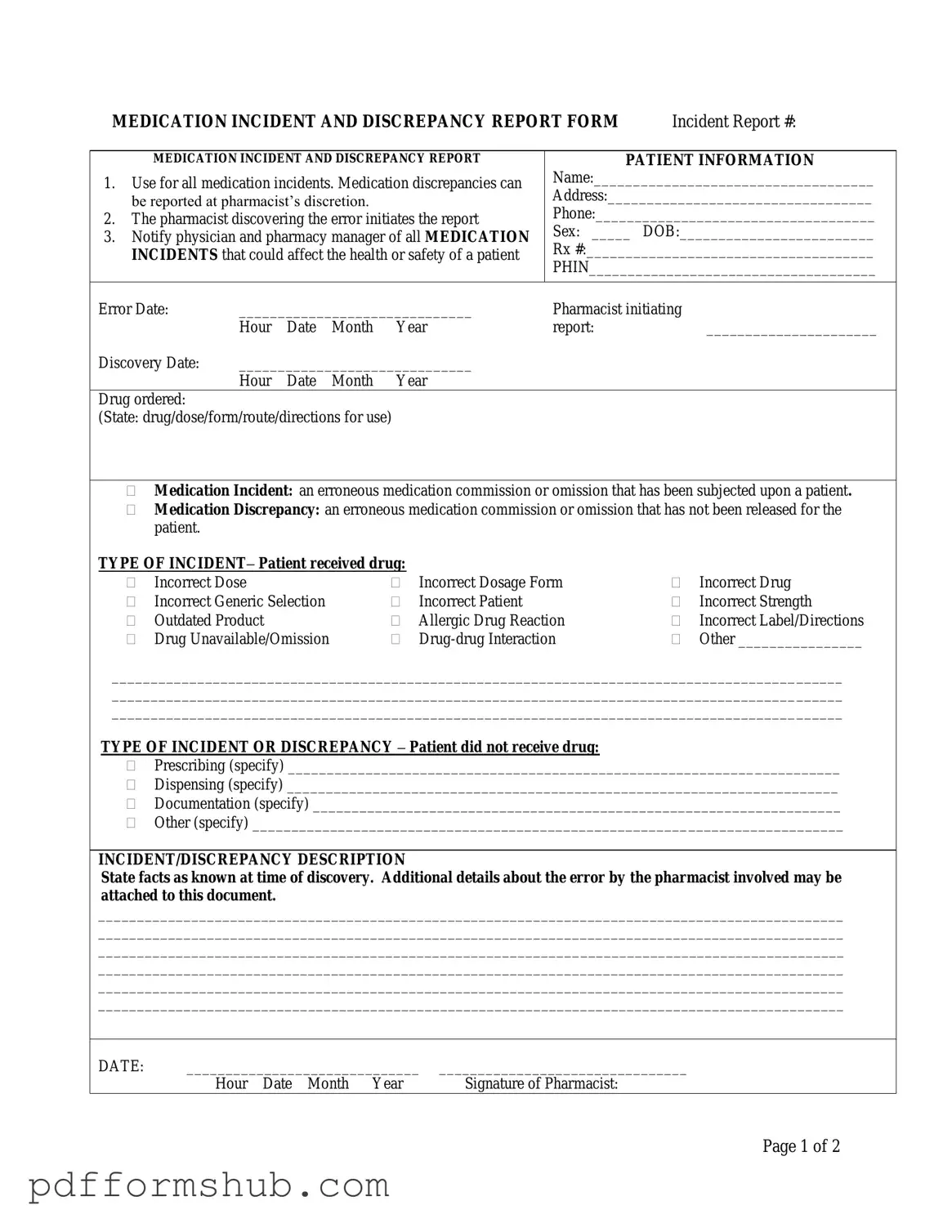The Medication Error and Discrepancy Report Form serves as a crucial tool in the healthcare system, aimed at enhancing patient safety and improving medication management. This form is designed for use in all instances of medication incidents, allowing pharmacists the discretion to report any discrepancies they encounter. When a pharmacist identifies an error, they are responsible for initiating the report, which must also notify both the physician and the pharmacy manager of any incidents that could potentially impact a patient's health or safety. Essential patient information, including name, address, and date of birth, is collected alongside details about the error, such as the drug involved and the type of incident. The form categorizes incidents into two main types: those where a patient received the wrong medication and those where a patient did not receive their prescribed medication. Each category includes specific options to identify the nature of the error, whether it be an incorrect dosage, a mislabeling issue, or a drug interaction. Furthermore, the form requires a detailed description of the incident, contributing factors that may have led to the error, and the outcomes of any follow-up investigations. By documenting these incidents thoroughly, the form not only aids in immediate corrective actions but also plays a significant role in preventing future occurrences, thereby fostering a culture of safety within the pharmacy environment.
